The best way health systems can serve their surrounding communities is to provide consistent and timely access to care, for every patient who needs it. This not only improves patient outcomes, but drives higher revenue and keeps costs low.
In the wake of the pandemic, hospitals in all settings have seen an influx of patients needing care access. This rush of higher patient demand, combined with capacity bottlenecks and unforeseen barriers, has made offering access a constant challenge. The New England Journal of Medicine stated in an April 2023 commentary “that the greatest risk to hospital safety and health care equity is the unprecedented capacity crisis faced in acute hospital care” and describes how hospitals and emergency departments nationwide are missing diagnoses or treatments due to overcrowding.
Health systems in urban centers or other population-dense areas must find ways to accommodate a higher number of patients using their existing capacity, and also be ready to receive transfer patients from community settings. Those community or rural hospitals, often the only point of care in a large geography, also have a critical responsibility to maintain available capacity for patients.
The need to open patient access is universal and urgent. Doing so begins with optimizing the flow through inpatient areas, which because of their unique qualities are the foundation to creating patient access.
Why inpatient flow keeps the “front door” to the health system open
There are two reasons maintaining open staffed inpatient beds, through efficient patient flow, is essential to maintaining access to the hospital overall.
First, beds are the only assets in the hospital that do not operate on schedules. While other care assets like operating rooms (ORs) and infusion chairs must be prepared for add-on patients, the scheduling of elective cases and appointments makes these assets’ future utilization at least somewhat predictable. The need for beds, however, is determined by flow from other areas of the hospital as well as the arrival of new patients, so some beds must always remain open to fulfill this need. This leads to the second reason. Because areas like the OR and the emergency department must move patients to inpatient units when their treatment is finished, beds must be always available to prevent bottlenecks in those other areas.
Beds that are open, staffed and ready to receive patients in multiple care levels are therefore vital to the whole hospital maintaining capacity and operating efficiently. Managing inpatient flow so that patients move among beds or are discharged in a timely way creates healthcare access, but this is a complex balancing act that’s challenging to achieve.
The day-to-day impact of inpatient capacity problems, and addressing the cause
Inpatient leaders and front-line staff do the best they can with the resources they have, reactively adjusting and configuring inpatient units based on fluctuating demand, resulting in major capacity problems. Recently, a hospital in San Francisco reported incoming patients waiting for up to two days to be placed in beds, and emergency nurses at University of California San Diego held a rally to draw attention to the overcrowding in their hospital and the accompanying safety risks to vulnerable patients.
Creative solutions like the universal inpatient care units University of Wisconsin Madison designed to accommodate multiple levels of care can help alleviate the capacity pressure to some extent, but are not feasible for all health systems and are not optimal without addressing the root cause of the problem.
How AI-enabled technology supports efficient patient flow and creates capacity
To proactively manage patient throughput, overcome capacity barriers and ensure uninterrupted patient care progression, inpatient leaders and personnel must match available supply of beds with upcoming demand. The only way to do so accurately is through the support of technology powered by AI and predictive analytics. LeanTaaS’ iQueue for Inpatient Flow solution is designed to address these needs across the inpatient setting.
Multi-disciplinary teams of physicians, nurses, ancillary departments and support services work collaboratively to understand how events in one inpatient area affect all the others and prevent capacity barriers like staff shortages before they occur. Nurse leaders must be able to adjust staffing and resources on intensive and post-anesthesia care units based on the likely inflow of patient populations. A patient’s entire care team must be able to share timely insights on potential discharge barriers so they can be quickly identified and resolved.
The iQueue platform uses the combination of data analytics and automation to give all these stakeholders visibility into present and likely future patient demand, staff and bed availability, and possible barriers to discharge. It also recommends the most impactful decisions on opening or closing units and assigning staff, and offers a way for users to communicate team-wide, from anywhere, in real time. With these tools, team members can successfully note and address inpatient capacity barriers before they arise, and promote a smoother flow that keeps access to the “front door” open.
Success using AI to manage inpatient flow and open hospital access
Many health systems, of varying sizes and in diverse geographies, have deployed iQueue to improve inpatient access and thus patient access overall. A Florida health system with a Top 100 Magnet designation achieved capacity volumes like never before, reducing average length of stay by 13 hours while experiencing the highest census levels in their facility’s history. They also decreased discharge processing time by 10% and ED boarding hours by 32%, while average daily census and ED visits had both increased by over 20%. Meanwhile the Texas-based 850-bed Hendrick Health system not only reduced order to discharge by 22% and ED boarding time by 49%, but reduced the number of patients who left without being seen by 39%.
These results show clear increases of inpatient capacity, with the ability to open beds faster, accommodate more patients and open access to care. Such progress will only become more necessary in the future.
The need – and opportunity – to maintain patient access in the future
As the U.S. population continues to grow and age, patient volumes will continue rising. Health systems who are large or strong enough to navigate this in both central and community contexts may still struggle with patient gridlocks or volume issues. They will also need to absorb the volume of any other health systems that shut down due to these pressures, while health systems facing such a risk will need to take steps to avoid closure.
All organizations now have an opportunity to survive and thrive by transforming their approach to patient capacity and find sustainable and informed means to solve for increased volumes using what staff and resources they already have. This journey begins with optimizing the flow through inpatient areas.
To learn more about opening the front door to the health system using technology, see further stories of using iQueue for Inpatient Flow here.
A version of this article was originally published on Becker’s Hospital Review.





